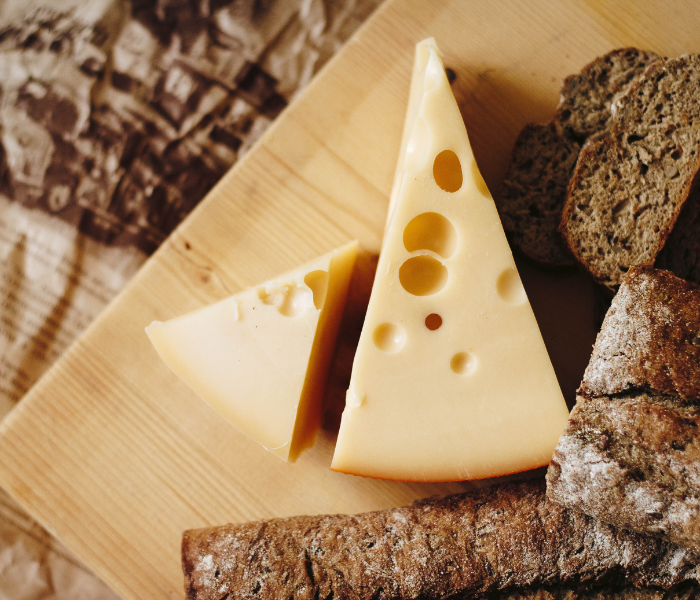Defining the Duality: What Is Grouse Cheese?
The term “grouse cheese” is a study in culinary ambiguity, representing three distinct concepts that intersect ecology, tradition, and creativity.
Artisanal Dairy Cheese refers to a semi-hard, raw-milk cheese from European highlands such as Scotland, the Alps, and Scandinavia. It is aged in natural caves and named for the grouse-inhabited terrain where its milk-producing animals graze. Despite the name, it contains no bird products.
Scottish Game Spread is a traditional Highland preparation combining shredded roasted grouse meat with fresh cheeses like Crowdie or Caboc, seasoned with juniper and pepper, then rolled in oatmeal.
Modern Culinary Pairing is a conceptual term for cheeses, such as smoked Gouda or aged cheddar, deliberately matched with grouse dishes to complement the bird’s gamey richness.
| Type | Base Ingredients | Key Regions | Defining Trait |
|---|---|---|---|
| Artisanal Dairy | Raw sheep/goat milk | Scottish Cairngorms, Alps | Foraged botanicals in rind |
| Scottish Game Spread | Grouse meat + Crowdie cheese | Scottish Highlands | Rolled in pinhead oatmeal |
| Culinary Pairing | Smoked Gouda, aged cheddar | Global gourmet kitchens | Flavor synergy with game meats |
The Highland Artisan: Terroir-Driven Dairy Cheese
True artisanal grouse cheese is a manifestation of the landscape. Sheep and goats graze on heather, wild thyme, and blaeberries in moorlands, transferring herbal-mineral notes to the milk. Curdling often uses nettle or cardoon thistle rennet, imparting earthy undertones absent in commercial alternatives. Wheels age for months on wooden shelves in natural caves, developing rinds rubbed with peat ash, juniper, or yarrow. This process creates complex flavor layers—“like a walk in the woods after rain.”
The Scottish Original: Crowdie-Grouse Fusion
This protein-rich spread originated in crofters’ kitchens, serving as both nourishment and preservation. Leftover grouse, hunted between August and December, was combined with acid-set Crowdie cheese to extend shelf life. It became a cultural staple, served during the “Glorious Twelfth” and Burns Night suppers.
Science of Pairing: Why Cheese Complements Grouse
Grouse meat’s strong gaminess, derived from its diet of heather and berries, demands bold cheese partners. Aged cheddar’s crystalline sharpness cuts through the meat’s dense fattiness, while smoked Gouda’s glutamate compounds amplify the savory depth of roasted grouse. Creamy brie melting over chewy grouse breast creates a satisfying textural contrast.
Pairings often include peated Scotch whisky, echoing the grouse’s terroir, or Syrah wine, whose berry notes enhance game flavors. Accompaniments like heather honey, blaeberry jam, and pickled beets bridge the flavors between cheese and game meat.
Threats to Tradition: Sustainability Challenges
Artisanal grouse cheese faces significant challenges. Climate change threatens alpine pastures essential for forage diversity. Many traditional cheesemakers are aging, with few younger artisans entering the demanding, low-margin trade. Additionally, EU and US restrictions on raw-milk cheeses pose risks to heritage production methods. To protect both methods and ecosystems, conservation groups advocate for Protected Designation of Origin (PDO) status.
Sourcing the Unfindable: A Connoisseur’s Guide
Authentic grouse cheese is rare and often requires direct sourcing. Artisanal dairy versions can sometimes be found through specialty mongers like Neal’s Yard in London or via online gourmet retailers, with prices reflecting their exclusivity. The Scottish spread can be recreated at home by combining Crowdie cheese with grouse meat purchased from licensed game butchers. Proper storage in cheese paper at cellar temperature, and serving at room temperature, ensures full aromatic complexity.
Conclusion: More Than Cheese—A Cultural Artifact
Grouse cheese, in all its forms, is more than a food—it’s a narrative of people and place. As ecological storytelling, the dairy variant captures the biodiversity of highland pastures in edible form. As cultural heritage, the Scottish spread preserves centuries-old ingenuity in food preservation. And as a gourmet statement, both challenge the pace and uniformity of mass production, celebrating patience, tradition, and the authenticity of terroir.
Journalist
Jess Klintan, Editor in Chief and writer here on Sportsrater.co.uk Email: sportsrater5@gmail.com, Follow her on Facebook , Instagram

